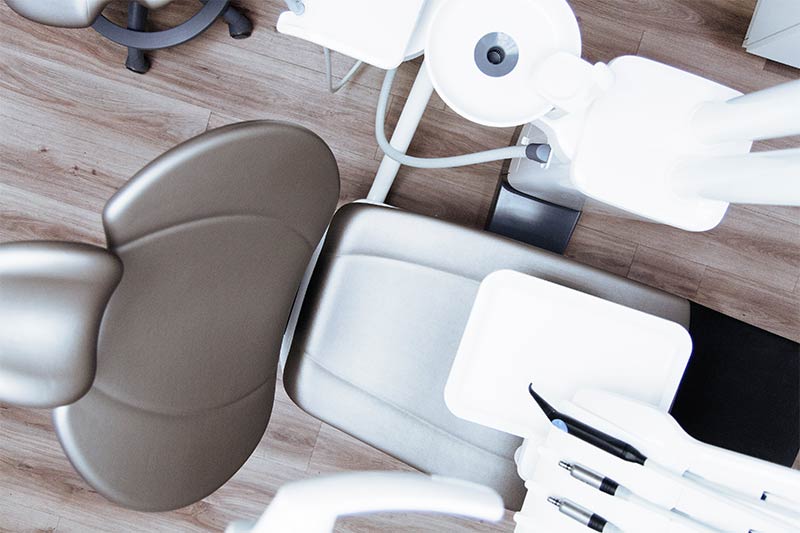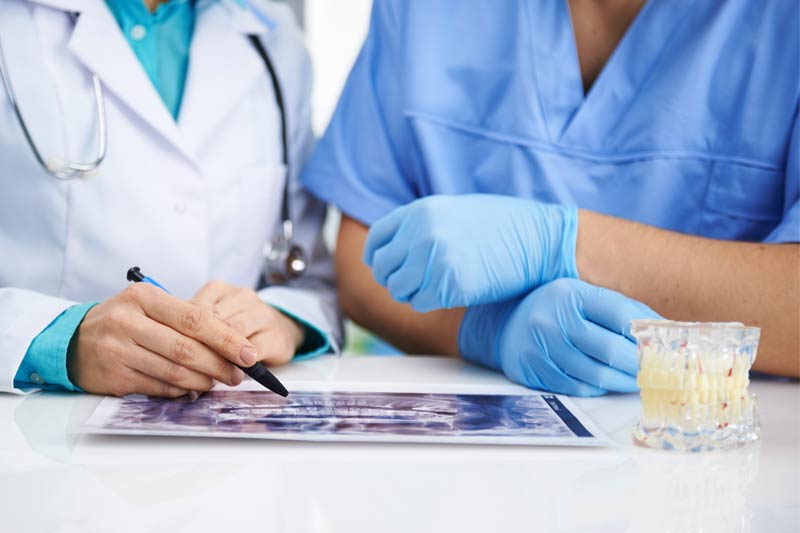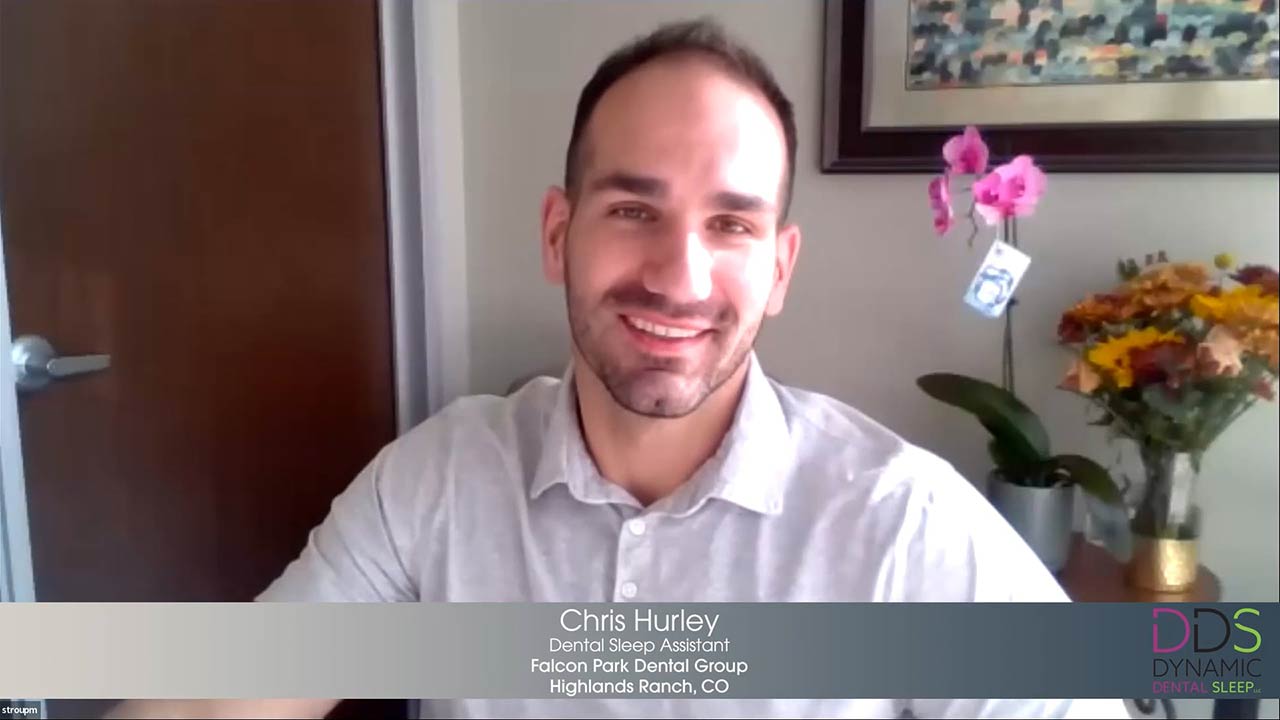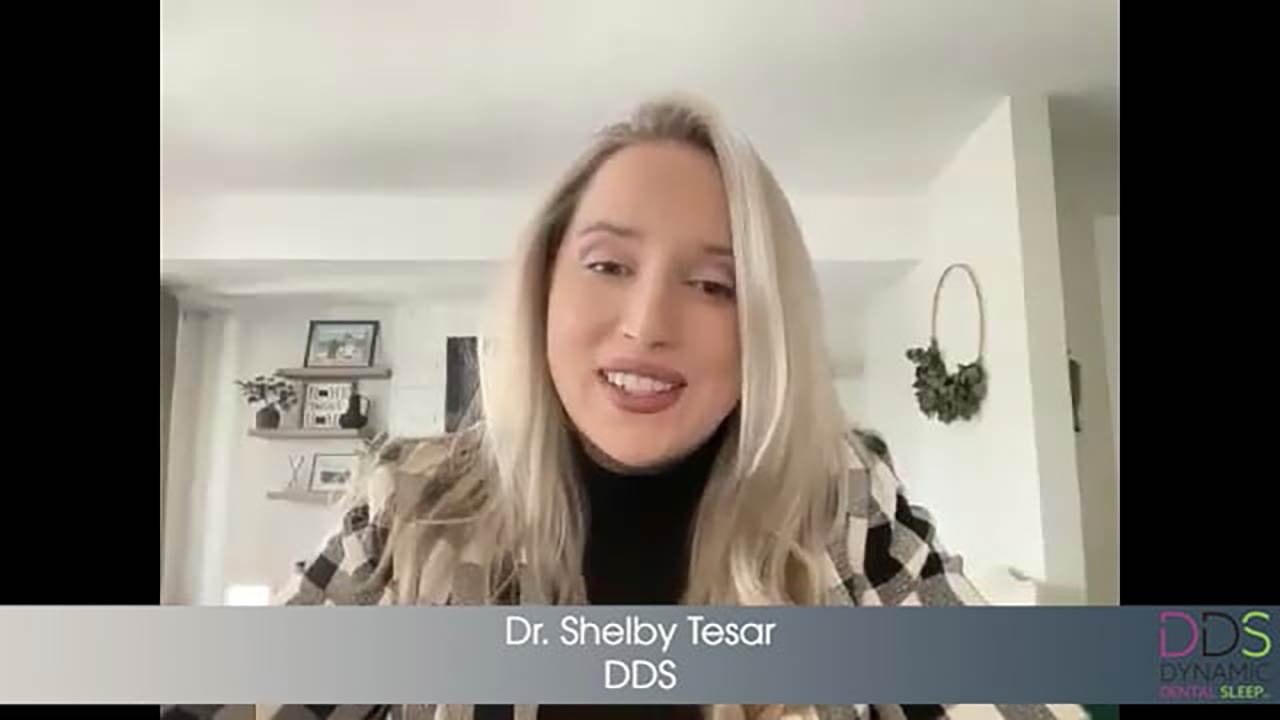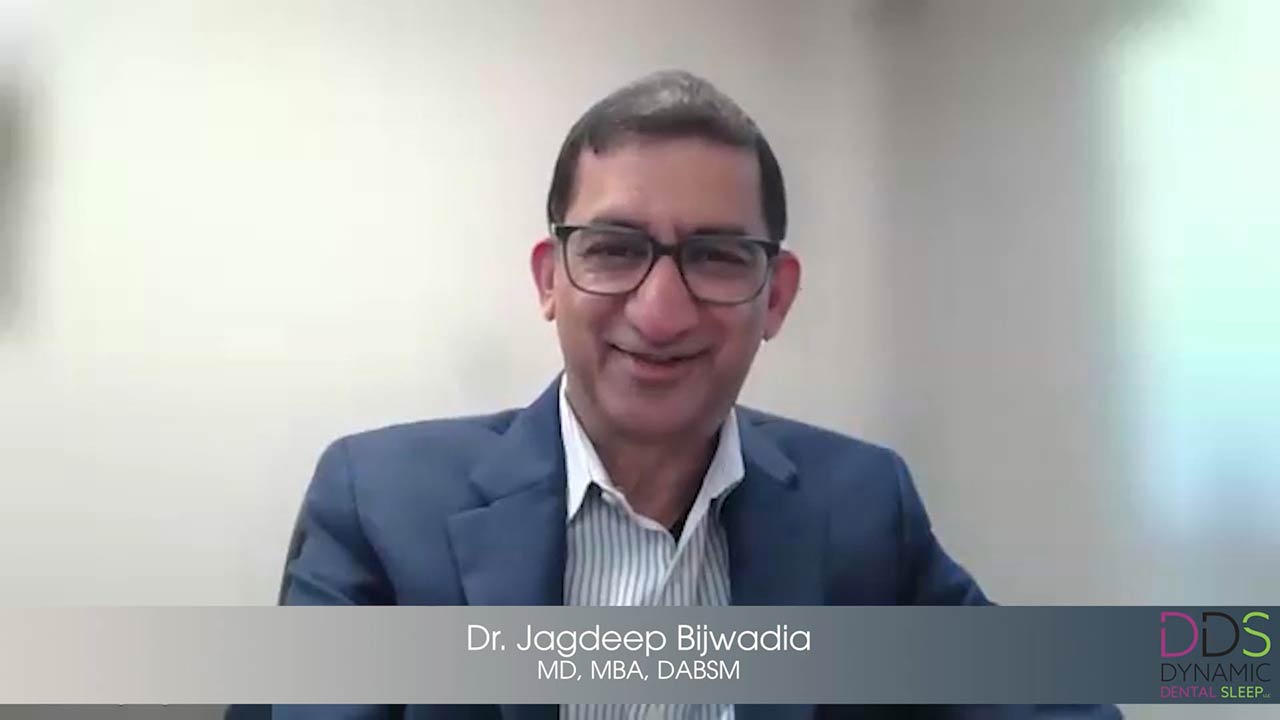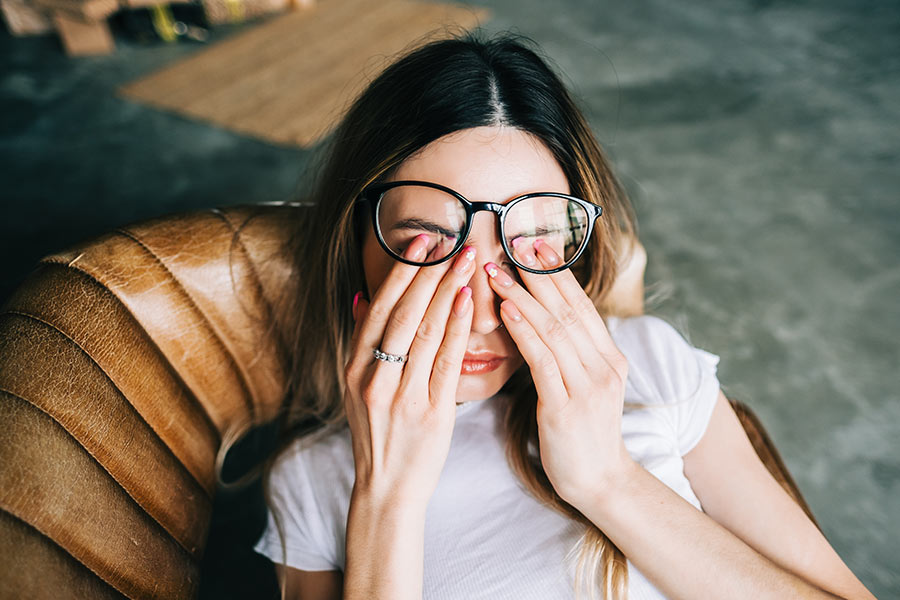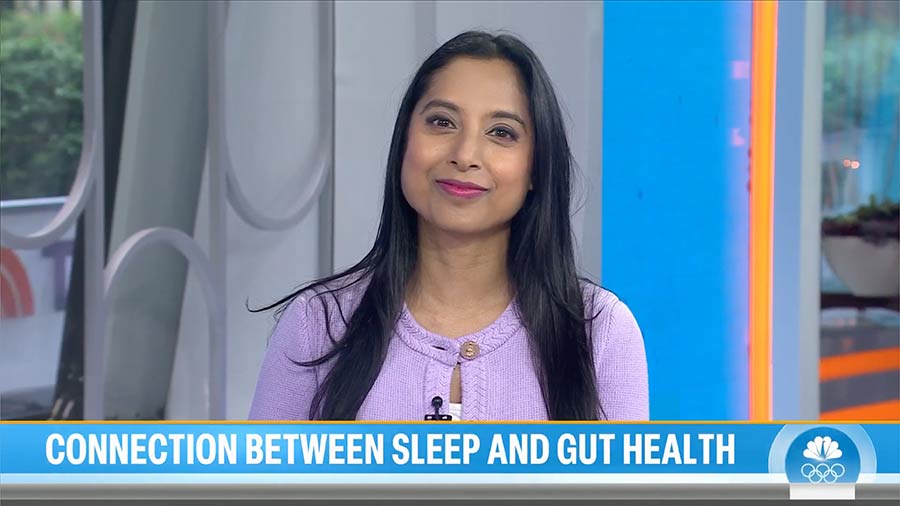Why Dental Sleep Medicine?
Incorporating dental sleep medicine into your practice isn’t just about expanding services—it’s about making a significant impact on the health and well-being of your patients and community. Dentists play a crucial role in identifying signs, symptoms, and oral manifestations of possible obstructive sleep apnea (OSA) during routine dental visits, contributing to improved health outcomes for the population.
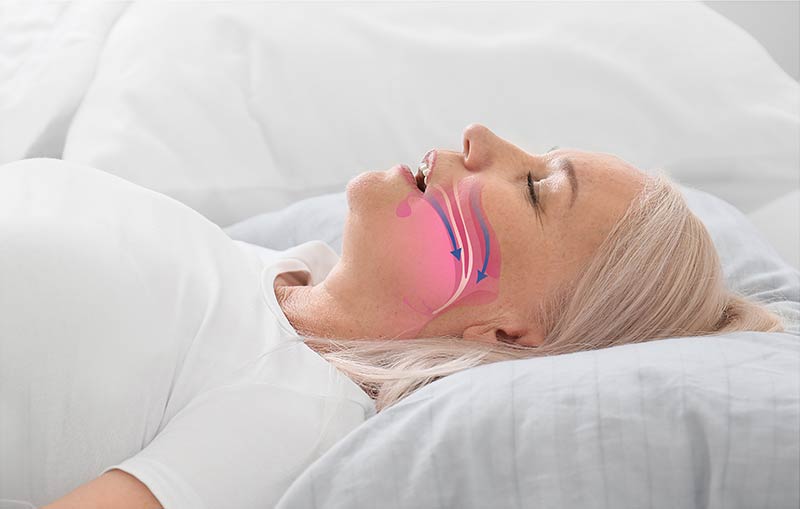
Addressing OSA in the dental setting helps bridge the gap in identifying undiagnosed cases. Research indicates that up to 80% of moderate to severe OSA cases remain undiagnosed, highlighting the urgent need for increased screening efforts1. By integrating OSA screening into routine dental visits, dentists, hygienists, and team members can identify individuals at risk and facilitate timely referrals for further evaluation and treatment.
Furthermore, the oral cavity often exhibits telltale signs of OSA, such as dental wear patterns, enlarged tonsils, and a high arched palate2. Dental professionals are uniquely positioned to detect these oral manifestations and raise suspicion for underlying sleep-disordered breathing.
By proactively screening for OSA, dental practices not only contribute to early detection and intervention but also play a crucial role in promoting overall health and wellness within the community. Untreated OSA is associated with an increased risk of cardiovascular disease, hypertension, diabetes, and other serious health conditions3. By addressing OSA early on, dental providers can mitigate these risks and improve long-term health outcomes for their patients.
Moreover, incorporating dental sleep medicine facilitates collaboration between the dental and medical communities. The medical community has increasingly recognized the importance of dentists in OSA screening and treatment, advocating for greater collaboration to address this public health concern4. Dentists can provide PAP alternative therapy with oral appliances, offering patients an effective and comfortable treatment option that may improve adherence to therapy and enhance outcomes.
Numerous studies have demonstrated the efficacy of oral appliance therapy in managing OSA, with comparable outcomes to continuous positive airway pressure (CPAP) therapy5. By providing patients with a choice of treatment modalities, dentists can personalize care and improve patient satisfaction and compliance.
Implementing dental sleep medicine screening and treatment services into a dental practice not only enhances patient care but also fosters collaboration between dental and medical professionals. By identifying signs, symptoms, and oral manifestations of OSA during routine dental visits, providers can contribute to early detection, intervention, and improved health outcomes for patients in the community. Through their dedication and commitment, these providers are helping to reduce the prevalence of OSA-related health complications and improve the well-being of countless individuals. By incorporating OSA screening and treatment into their practices, they are playing a vital role in promoting early detection, intervention, and management of this serious sleep disorder.
References
- Peppard PE, Young T, Barnet JH, Palta M, Hagen EW, Hla KM. Increased prevalence of sleep disordered breathing in adults. Am J Epidemiol. 2013;177(9):1006-1014.
- Attanasio R. Oral findings in sleep apnea: a review of the literature. Sleep Med. 2020;66:258-265.
- Kendzerska T, Gershon AS, Hawker G, Leung RS, Tomlinson G. Obstructive sleep apnea and incident diabetes: a historical cohort study. Am J Respir Crit Care Med. 2014;190(2):218-225.
- Kushida CA, Morgenthaler TI, Littner MR, et al. Practice parameters for the treatment of snoring and obstructive sleep apnea with oral appliances: an update for 2005. Sleep. 2006;29(2):240-243.
- Giles TL, Lasserson TJ, Smith BH, White J, Wright J, Cates CJ. Continuous positive airways pressure for obstructive sleep apnoea in adults. Cochrane Database Syst Rev. 2006; (3):CD001106.
How It Works
Every dental practice should, at a minimum, prioritize screening patients for sleep-related breathing disorders and provide resources for further evaluation by a sleep physician. Dentists who choose to go a step further and treat qualifying patients with oral appliance therapy must adhere to established guidelines set forth by respected organizations like the American Academy of Dental Sleep Medicine (AADSM) and the Academy of Clinical Sleep Disorders Disciplines (ACSDD).
Dr. Ashley Spooner, the founder of Dynamic Dental Sleep, LLC, has developed workflows based on these guidelines to ensure that dentists provide the highest quality of care while following proper protocols every step of the way. These workflows encompass essential components such as referring patients for further screening and sleep studies diagnosed by board-certified sleep physicians. Upon diagnosis, obtaining prescriptions for oral appliance therapy is facilitated, followed by completing efficacy studies to ensure the suitability and effectiveness of the treatment. Additionally, comprehensive follow-up care is prioritized to monitor progress and address any concerns or adjustments needed for optimal patient outcomes. Collaboration with the broader medical care team is also emphasized to ensure holistic patient management.
It’s crucial for dentists to recognize that treating patients with oral appliance therapy involves more than just taking an impression and delivering an appliance. It requires a thorough understanding of sleep medicine principles, adherence to established protocols, and ongoing collaboration with other healthcare professionals.
While this may seem daunting and potentially distracting for a general dentistry practice, Dynamic Dental Sleep, LLC offers tailored solutions to streamline the process and ensure that dentists can provide their patients with high-quality, consistent care. Our business workflows are designed to enhance efficiency and effectiveness, allowing dentists to focus on what matters most: improving patient outcomes and overall quality of life.
Benefits of Oral Appliance Therapy for Treating OSA
Oral Appliance Therapy (OAT) offers a multitude of benefits for patients suffering from obstructive sleep apnea (OSA), providing an effective alternative to Continuous Positive Airway Pressure (CPAP) therapy. Backed by research and clinical studies, here are some of the key benefits of OAT:
Improved Patient Outcomes
Numerous studies have demonstrated the effectiveness of OAT in reducing the severity of OSA and improving sleep-related outcomes. According to a meta-analysis published in the Journal of Clinical Sleep Medicine, OAT significantly reduces the Apnea Hypopnea Index (AHI) and improves daytime sleepiness compared to baseline1.
Higher Compliance Rates
One of the main challenges with CPAP therapy is patient compliance, with studies reporting non-adherence rates ranging from 29%-83%2. In contrast, OAT is reported to have 90% of patients continuing to wear their appliance after 5 years due to its comfort and ease of use, leading to improved treatment adherence and long-term success3.
Reduced CPAP Intolerance
For patients who are intolerant or non-compliance with CPAP therapy, OAT offers a viable alternative. Research indicates that that 61.6% of CPAP patients abandon therapy after 6 months4 and up to 50% of patients prescribed CPAP therapy experience difficulties or discomfort5. OAT provides these patients with a comfortable and effective treatment option, improving overall satisfaction and adherence.
Customized Treatment
OAT is tailored to each patient’s specific oral anatomy, ensuring a personalized and comfortable fit. Dental providers can customize oral appliances to optimize effectiveness and patient comfort, leading to improved treatment outcomes and patient satisfaction.
Convenient and Portable
Unlike CPAP machines, which require electricity and bulky equipment, oral appliances are compact, portable, and easy to travel with. Patients can conveniently use their oral appliances wherever they go, ensuring consistent treatment adherence and effectiveness.
Combination Therapy
Some patients may experience side effects or limitations with either OAT or PAP therapy alone. Combining both therapies may mitigate these side effects by distributing the treatment effects and reducing the reliance on higher CPAP pressures or aggressive mandibular advancement.
Dental Office Benefits
Incorporating screening and treatment of OSA with OAT into the dental practice offers numerous benefits, including expanded service offerings, increased patient satisfaction, and practice differentiation. By providing comprehensive sleep solutions, dental offices can attract new patients, enhance patient loyalty, and improve overall practice growth and profitability.
Collaboration
By offering oral appliance therapy for OSA treatment, dental providers can significantly improve patient outcomes, address CPAP intolerance issues, and differentiate their practice in the competitive healthcare landscape. Collaborating with the medical community further strengthens this approach, allowing for interdisciplinary care that addresses the multifaceted nature of obstructive sleep apnea. Through collaboration with sleep physicians, pulmonologists, and other healthcare professionals, dental providers can ensure comprehensive patient evaluation, treatment planning, and follow-up care. This integrated approach not only enhances patient outcomes but also fosters mutual respect and understanding between dental and medical professionals, ultimately benefiting patients and promoting a more cohesive healthcare system.
References
- Sutherland K, Vanderveken OM, Tsuda H, et al. Oral appliance treatment for obstructive sleep apnea: an update. J Clin Sleep Med. 2014;10(2):215-227.
- Wolkove N, Baltzan M, Kamel H, Dabrusin R, Palayew M. Long-term compliance with continuous positive airway pressure in patients with obstructive sleep apnea. Can Respir J. 2008;15(7):365-369.
- de Almeida FR, Lowe AA, Tsuiki Set al.Long-term compliance and side effects of oral appliances used for the treatment of snoring and obstructivesleep apnea syndrome. J Clin Sleep Med; 2005;1:143-52, 17561628
- Rotenberg BW, Murariu D, Pang KP. Trends in CPAP adherence over twenty years of data collection: a flattened curve. J Otolaryngol Head Neck Surg. 2016 Aug 19;45(1):43. doi: 10.1186/s40463-016-0156-0. PMID: 27542595; PMCID: PMC4992257.
- Gagnadoux F, Le Vaillant M, Paris A, Pigeanne T, Leclair-Visonneau L, Bizieux-Thaminy A. Relationship between OSA clinical phenotypes and CPAP treatment outcomes. Chest. 2016;149(1):288-290.
Schedule a Complimentary 15 Minute Discovery Call
Are you intrigued by the prospect of integrating dental sleep medicine into your practice but unsure where to begin? Let us partner with you on this journey toward improving patient outcomes, fostering practice growth, enriching the purpose for both you and your team, and collaborating with your medical community.
Schedule a complimentary 15-minute discovery call with us, and we'll help you chart the path forward. During this call, we'll discuss your practice goals, assess your current readiness for implementing dental sleep medicine, and provide insights into the next best steps tailored to your unique needs.
Whether you're a seasoned practitioner looking to expand your service offerings or a newcomer eager to explore the possibilities, our team of experts is here to support you every step of the way.
Don't let uncertainty hold you back. Schedule your complimentary discovery call today and embark on a journey to elevate your practice with dental sleep medicine.
Dental Sleep Medicine Services
Dynamic Dental Sleep, LLC is your trusted partner in dental sleep medicine education and training. We specialize in equipping dental professionals and their teams with the knowledge, skill, and optimized workflows needed for seamless implementation of dental sleep medicine into any dental practice. Our instructors and coaches are leading experts in the field of dental sleep medicine with years of clinical practice and education. You’ll learn from the best and gain valuable insights that you can apply directly to your practice. Whether you are new to dental sleep medicine or are looking to expand your expertise and grow your practice, our comprehensive curriculum, hands-on practical experience, and seamless screening, treatment, follow-up, and billing workflows will empower you to elevate yourself and your practice. You and your team will be empowered to help patients achieve better overall health and a higher quality of life through treating their obstructive sleep apnea.
Ready to take your practice to new heights with dental sleep medicine services? Click below to learn more about how we can help you achieve your goals through our training programs and consulting services.
Medical Community Collaboration
In recent years, the medical community has increasingly recognized the vital role that dentists can play in screening for and treating obstructive sleep apnea (OSA). As OSA remains significantly underdiagnosed and undertreated, collaborative efforts between medical and dental professionals are crucial in addressing this public health concern.
A study published in the American Journal of Public Health highlighted the effectiveness of dental professionals in identifying individuals at high risk for OSA through simple screening tools such as questionnaires and examinations1. By leveraging their unique position to observe signs of sleep-disordered breathing during routine dental visits, dentists can identify patients who may benefit from further evaluation and treatment for OSA.
Furthermore, integrating dental professionals into the multidisciplinary care team for OSA management has shown promising results in improving patient outcomes and reducing the burden of untreated OSA on overall health. Research published in Sleep Medicine Reviews emphasized the importance of collaborative care models involving dentists, sleep physicians, and other healthcare providers in optimizing treatment outcomes for OSA patients2.
Medical-dental integration offers several benefits in patient care, including enhanced access to screening and treatment services, streamlined care coordination, and improved patient compliance and adherence to treatment. By working together, medical and dental professionals can provide comprehensive care that addresses both the dental and medical aspects of OSA, leading to better overall health outcomes for patients.
For dentists and their practices, collaborating with the medical community presents numerous advantages. Not only does it expand the scope of services offered, but it also strengthens professional relationships, fosters interdisciplinary learning, and enhances practice reputation and patient trust.
Dynamic Dental Sleep, LLC recognizes the importance of facilitating collaboration between dental and medical providers in the management of OSA. Our training programs equip dental professionals with the knowledge and resources necessary to establish effective communication channels with medical providers. This includes providing letter templates and other communication tools to streamline referrals and ensure efficient and effective collaboration in patient care.
By bridging the gap between medical and dental care, Dynamic Dental Sleep, LLC empowers dentists to play a vital role in improving patient outcomes and contributing to the overall health and well-being of their communities.
References
- Kushida CA, Morgenthaler TI, Littner MR, et al. Practice parameters for the treatment of snoring and obstructive sleep apnea with oral appliances: an update for 2005. Sleep. 2006;29(2):240-243.
- Doff MH, Hoekema A, Wijkstra PJ, et al. Oral appliance versus continuous positive airway pressure in obstructive sleep apnea syndrome: a 2-year follow-up. Sleep. 2013;36(9):1289-1296.
Provider Testimonials
Learn about the experiences of healthcare professionals who treat patients with sleep disorders and specialize in oral appliance therapy. Hear from experts about their approach to patient care and treatment outcomes.
Provider Resources
Stay updated with the latest news and advancements in sleep medicine and oral appliance therapy. Explore articles, videos, podcasts, and breakthroughs shaping the field.
Trusted Vendors
At Dynamic Dental Sleep, LLC (DDS), we believe that collaboration within the sleep medicine industry is paramount for achieving better patient outcomes, fostering implementation success, and driving continual progress in technology for the diagnosis and treatment of sleep-related breathing disorders.
Dr. Spooner and the DDS team are dedicated to collaborating with vendors who share our commitment to excellence. We prioritize working with vendors who maintain the highest standards of service, offer top-quality products, and adhere rigorously to industry guidelines and standards.
DDS trained providers can connect and collaborate with our trusted vendors and preferred relationships. Through these relationships, we ensure that our providers have access to the most innovative, cost conscious, and effective solutions available.
Dr. Spooner remains actively involved in establishing relationships with vendors and thoroughly vetting new products. This commitment guarantees that DDS trained providers are consistently exposed to the latest advancements in technology for sleep medicine.
We firmly believe that the collaboration of teams, each showcasing their strengths, ultimately benefits everyone involved. Our dedication to fostering these collaborative relationships underscores our commitment to advancing the field of sleep medicine.
Visit this section regularly for updates on our trusted vendors and the latest advancements in sleep medicine technology. Together, we are shaping the future of sleep health for improved patient care and outcomes.
Please utilize the resources provided through DDS upon course completion to purchase or register with the trusted vendors. This ensures you are identified as a DDS trained provider.
Disclaimer: Liability for Trusted Vendors
Dynamic Dental Sleep, LLC (DDS) operates as a separate entity from our trusted vendors. While we strive to partner with vendors who maintain the highest standards of quality and service, Dynamic Dental Sleep, LLC cannot be held liable for the actions, products, or services provided by these trusted vendors.
Any engagement or transaction between our trained providers and our trusted vendors is conducted at the discretion and risk of the involved parties. Dynamic Dental Sleep, LLC does not assume responsibility for any disputes, damages, or liabilities arising from such engagements.
It is important to note that Dynamic Dental Sleep, LLC is a separate entity from its trusted vendors. Any agreements, contracts, or transactions entered into with these vendors are independent of Dynamic Dental Sleep, LLC.
By engaging with our trusted vendors, our trained providers acknowledge and accept this disclaimer of liability, understanding that Dynamic Dental Sleep, LLC is not responsible for the acts or omissions of our vendors.
This disclaimer is provided to ensure transparency and clarity regarding the relationship between Dynamic Dental Sleep, LLC and our trusted vendors. If you have any questions or concerns regarding this disclaimer, please contact us for further clarification.

